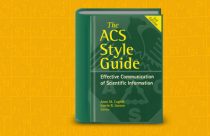Different Scientific Writing Style Guides

Authors are required to follow prescribed writing styles, formats, and guidelines mandated by a research journal when submitting an article for publication. This is to ensure that an article is consistent with the language and presentation quality characteristic to that journal. These criteria are usually outlined on the “Instructions to Authors” (also referred to as “Guidelines to Authors”) page/s of the journal. The first step in preparing an article for publication is to check the requirements specified by the target journal.
There are several generic requirements and conventions, and in addition, there are ones pertaining to specific subject areas. These are related to language and presentation, conventions, notations, citations, and other aspects. These guidelines are typically updated at periodic intervals at meetings of eminent and experienced editors in specific fields. Some of the commonly used style guides and manuals are listed below.
Listing of Style Guides
| Type/Subject Area | Association/Organization | Style Guide |
| General | Modern Language Association | MLA Style Manual: 3rd Ed. |
| General | American Psychological Association | APA Style Manual: 6th Ed. |
| General | University of Chicago Press | Chicago Manual of Style: 16th Ed. |
| Physics and Astronomy | American Institute of Physics | AIP Style Manual: 4th Ed. |
| Chemistry | American Chemical Society | ACS Style Guide: 3rd Ed. |
| Biology | Council of Science Editors | CSE Manual: 7th Ed. |
| Mathematics | American Mathematical Society | AMS Handbook |
| Engineering | Institute of Electrical and Electronics Engineers | 2009 IEEE Style Manual |
| Medicine | American Medical Association | AMA Manual of Style: 10th Ed. |
| Meteorology | American Meteorological Society | AMS Style Manual |
The above list is representative but is not meant to be comprehensive.
Once an article is written in conformity with the appropriate guidelines specified above, professional editing services can be utilized to crosscheck or improve on both language and presentation aspects. This can serve to expedite both the editorial and peer review process, and increase the chances of that article being accepted for publication.










Thank you, this information was very helpful.